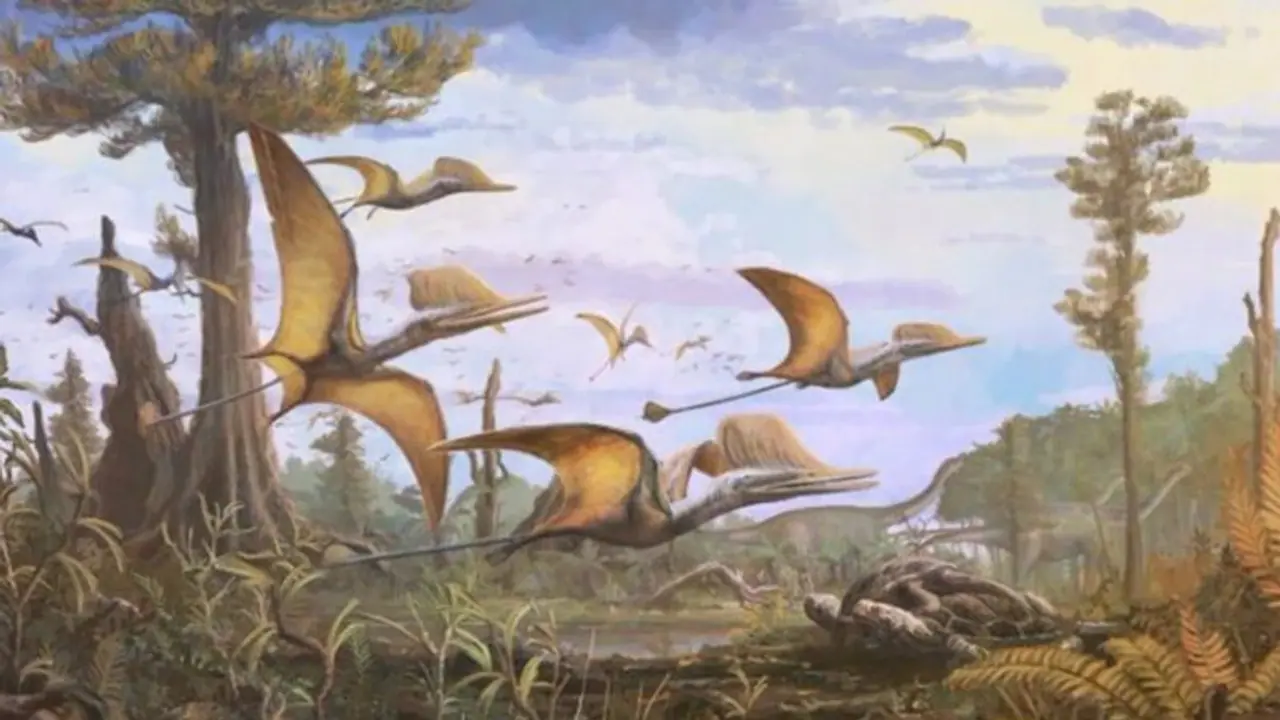Named Ceoptera, this remarkable creature lived approximately 168-166 million years ago during the Middle Jurassic period, offering valuable insights into the ancient skies of Scotland.
In a groundbreaking discovery, scientists from esteemed institutions including the Natural History Museum, University of Bristol, University of Leicester, and University of Liverpool have uncovered the fossilized remains of a distinct species of flying reptile, known as a pterosaur, on the Isle of Skye in Scotland. Named Ceoptera, this remarkable creature lived approximately 168-166 million years ago during the Middle Jurassic period, offering valuable insights into the ancient skies of Scotland.

The fossil, comprising wings, shoulders, legs, and backbone, provides a tantalizing glimpse into the evolutionary history of pterosaurs. However, notably absent from the discovery was the skull of Ceoptera, a detail that adds an air of mystery to the find, according to a BBC report. Estimated to have a wingspan of 1 to 1.5 meters, Ceoptera likely soared through the prehistoric skies with grace and agility.
Dr. Liz Martin-Silverstone, who utilized a CT scanner to generate a 3D digital model of the fossil, expressed the rarity of discovering fossils from the Middle Jurassic era. Describing finds from this period as "extremely rare," she emphasized the significance of uncovering more than just isolated bones. This discovery sheds light on a crucial period in the evolution of pterosaurs, as they transitioned from small-bodied, long-tailed forms to the larger, short-tailed species that dominated the skies in the subsequent Cretaceous period.
Professor Paul Barrett, a Merit Researcher at the Natural History Museum and senior author of the study, underscored Ceoptera's importance in refining our understanding of flying reptile evolution. Its unexpected appearance in the Middle Jurassic of the U.K. challenges previous assumptions about the distribution and timing of advanced pterosaur groups.
Ceoptera's name, derived from the Scottish Gaelic word "cheò," meaning mist, pays homage to its discovery on the mist-shrouded Isle of Skye. This fossil represents the second pterosaur find on the island, highlighting its significance as a treasure trove of prehistoric remains.
According to Professor Steve Brusatte, an expert not involved in the research, Ceoptera's existence provides compelling evidence of an intermediate stage in pterosaur evolution. During the Middle Jurassic period, pterosaurs reigned supreme in the skies, occupying landscapes characterized by sub-tropical climates, beaches, and lagoons. Scotland, then an island in the Atlantic Ocean, offered an ideal habitat for these majestic creatures.
The study, titled "A new pterosaur from the Middle Jurassic of Skye, Scotland and the early diversification of flying reptiles," published in the Journal of Vertebrate Paleontology, marks a significant milestone in our understanding of ancient ecosystems and the evolution of flying reptiles. Ceoptera's discovery adds another layer to Scotland's rich paleontological tapestry, unlocking secrets of the Jurassic skies and inspiring further exploration into the mysteries of prehistoric life.
